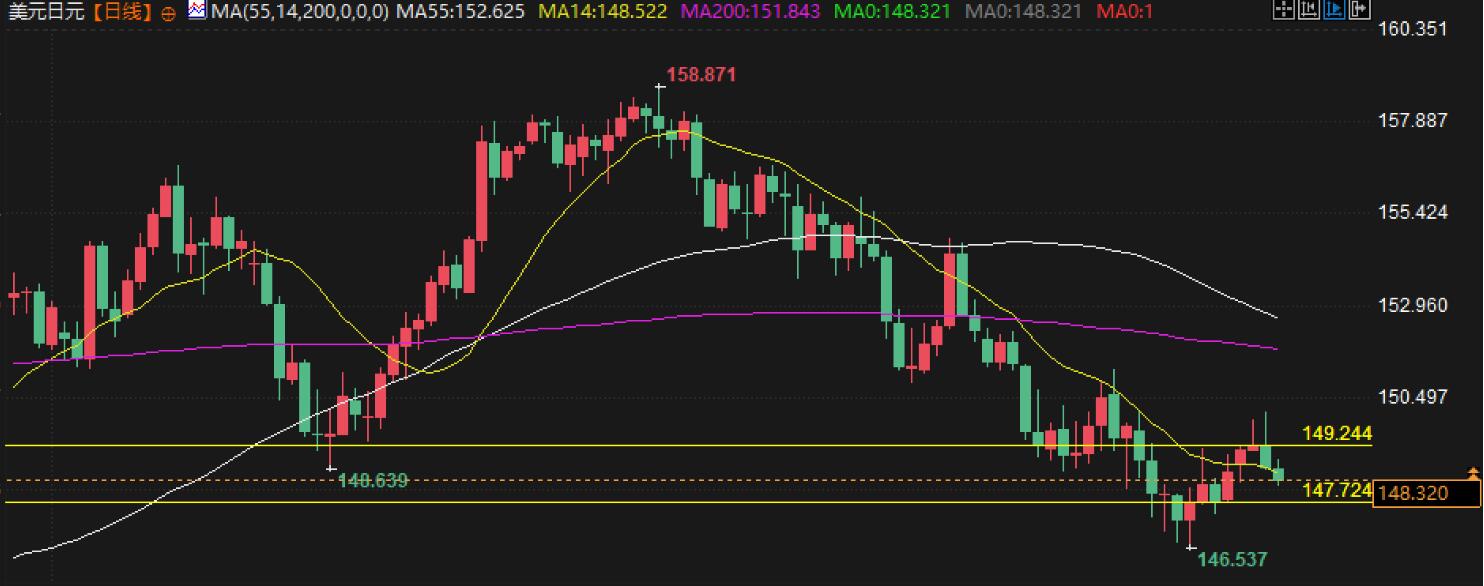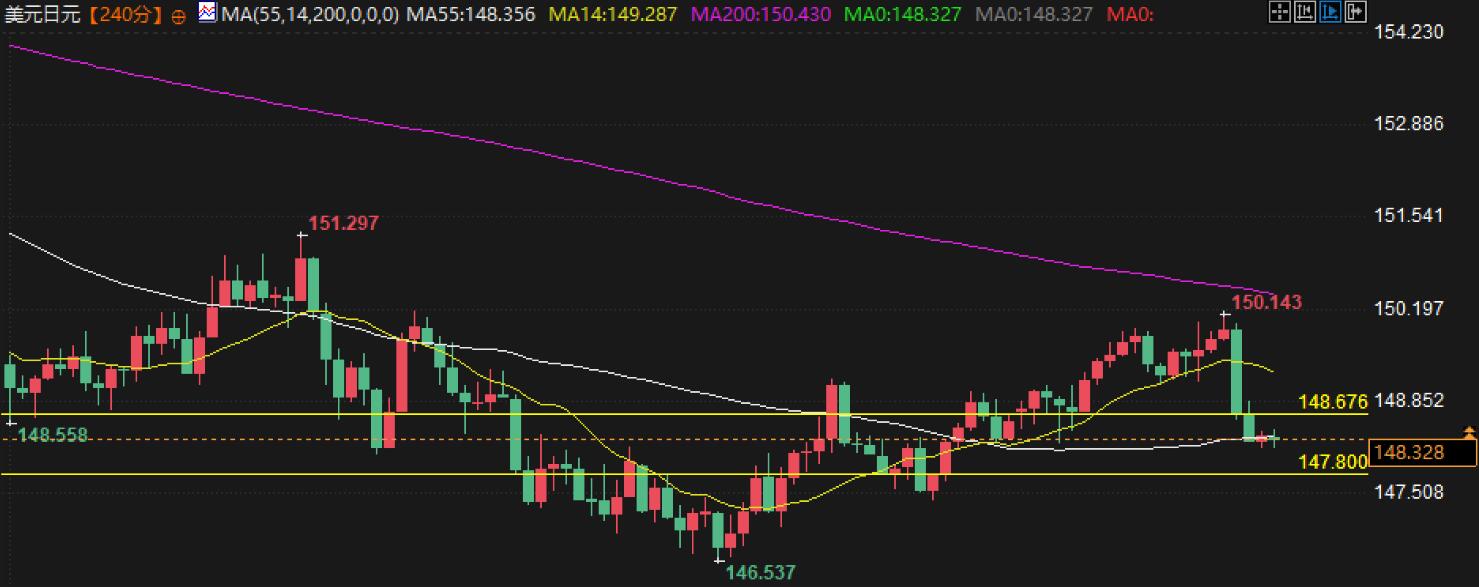Foreign exchange trading analysis: Can USD/JPY hold the 148 level?
At the beginning of the European market on Thursday (March 20th), the overall downward trend of the USD/JPY continued from the previous trading day, approaching the 148.00 integer level at one point during the session. The recent market uncertainty regarding Trump's foreign trade policy, the divergence in the Russia Ukraine situation, and the escalating geopolitical risks in the Middle East are all driving down market risk appetite and boosting the safe haven yen.
Fundamental analysis
The recent sluggish performance of the US dollar is mainly due to the Federal Reserve's second consecutive inaction, but also implies that there may be two more 25 basis point interest rate cuts before the end of this year. Although the Federal Reserve has slightly raised its inflation forecast, it is relatively cautious about economic growth, suggesting that some decision-makers remain concerned about the outlook for the US economy. The market currently generally expects the Federal Reserve to restart its interest rate cut cycle as early as the June meeting, which has put sustained pressure on the US dollar index in the near future.
On the other hand, in Japan, the Bank of Japan also kept interest rates unchanged at its meeting on Wednesday, but the governor emphasized after the meeting that if inflation continues to rise and drives further wage increases, it is not ruled out to gradually raise policy interest rates to maintain the long-term credibility of the inflation target. The previous salary increase and continued strengthening of consumer spending have raised market expectations for a more hawkish policy towards the Bank of Japan. The expected narrowing of interest rate spreads and the increased demand for safe haven due to geopolitical risks have provided additional support for the Japanese yen.
Technical analyst interpretation:
From the daily chart observation (MA55=152.625, MA14=148.522, MA200=151.843), the current exchange rate is hovering around the 148.50 line, with the previous low of 146.537 and the recent high of 149.244 forming short-term support and resistance. RSI (14) is currently around 40, indicating that the exchange rate is still in a weak range overall. If the future price falls below 147.724 and exceeds 1.5 times the daily ATR (14) threshold (ATR is about 0.691~1.424), it may trigger further CTA strategy selling, and the market may test the downward space around 146.537 again. On the contrary, if it steadily stands at 149.244 and breaks through the same range in volume, it is expected to open up an upward channel.

On the 4-hour chart (MA55=148.356, MA14=149.287, MA200=150.430), the short-term and long-term moving averages are beginning to approach each other, but the price center of gravity is still slightly below. The recent high point of 150.143 and the low point of 146.537 form a volatile range, and the current price is located near the central region. RSI (14) is around 41, indicating a slight bearish trend in short-term momentum. ATR (14) fluctuates within the range of 0.283~0.507, with a relatively low volatility. However, driven by geopolitical risks, new breakthrough trends may emerge at any time. If the price retraces to the range of 148.676-149.287 and still encounters selling pressure, we need to be wary of the exchange rate falling again to key positions such as 148.00 and 147.800.

Overall, the Japanese yen has remained strong compared to the US dollar in recent times due to the interweaving of policy expectations and safe haven demand. If short-term geopolitical risks are difficult to dissipate, or if the Federal Reserve's interest rate expectations shift towards a more dovish direction, the US dollar/Japanese yen may still face the risk of further decline.
Future prospects
If the Bank of Japan gradually raises interest rates in the coming months based on changes in inflation and wage growth, the yen may continue to receive funding support. However, if there is a significant shift in the Federal Reserve's tolerance for inflation and assessment of the economy, leading to a slowdown in the pace of interest rate cuts or a return to a wait-and-see attitude, the US dollar may also experience a technical rebound in the short term.
It should be noted that there may still be fluctuations in the medium to long term trend of the US dollar/Japanese yen: on the one hand, there is still uncertainty about whether the Bank of Japan can truly take substantial steps to raise interest rates; On the other hand, the Federal Reserve's assessment of the economic outlook may be adjusted in response to changes in economic data. The market continues to monitor the progress of core inflation data in the United States, whether wage growth can drive Japan's inflation to continue rising, and the latest developments in geopolitical risks. If the macro environment or policy tone changes, the exchange rate may emerge from a long-term trend opposite to the current trend. At that time, it is necessary to timely assess the risks and effective breakthroughs in price support resistance.
Overall, against the backdrop of continuously narrowing interest rate differentials (expected), tense geopolitical situations, and market doubts about the prospects of global economic recovery, the US dollar/Japanese yen is still in a phase environment where it is easy to fall but difficult to rise. Whether the 148 level can be stabilized in the future will depend on the further clarification of the monetary policy prospects of the United States and Japan, as well as whether the risk aversion sentiment can continue to ferment.
Note: The fundamental content of this article is based on a Reuters report.
Tips:This page came from Internet, which is not standing for FXCUE opinions of this website.
Statement:Contact us if the content violates the law or your rights
